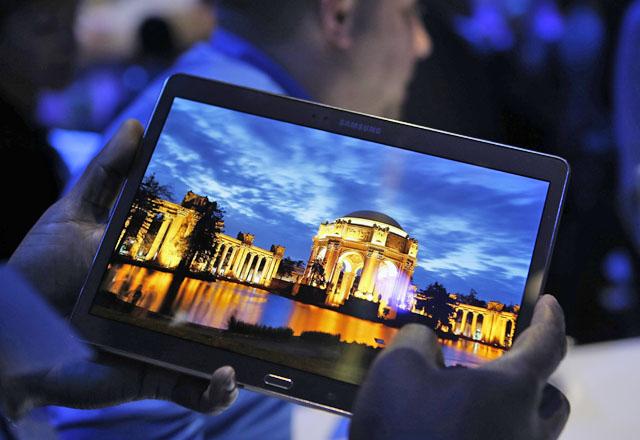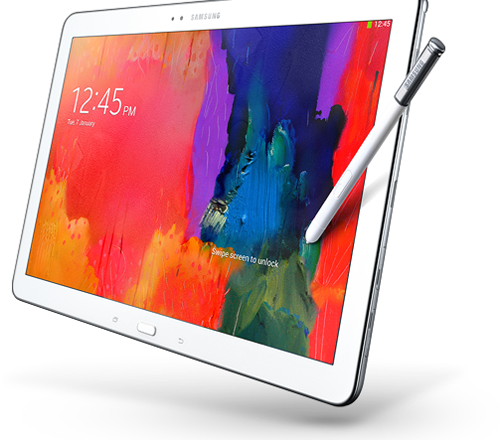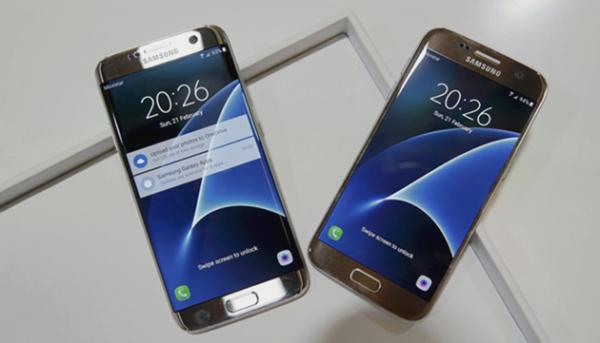You are here
Colours come to life in new Samsung tablet
By AP - Jun 24,2014 - Last updated at Jun 24,2014

NEW YORK — Samsung’s new Galaxy Tab S tablet looks different.
As soon as I turned on the screen, I noticed that the colours are stunning and vivid. Red looks redder, and greens are greener. The lawn and the trees in “Ghostbusters” look alive, as does a purple-tinted apparition.
The Tab S is also thinner than other leading tablets, at a quarter of an inch (6.6 millimetres). The model with the smaller screen is lighter, too.
Samsung Electronics Co. achieves all this by using a display technology previously limited to smartphones. It’s called AMOLED, for active-matrix organic light-emitting diodes. Samsung released an AMOLED tablet in 2012, but it was expensive and didn’t sell well. The new ones are priced more competitively — the same as iPads of comparable size.
The Tab S with an 8.4-inch (21.3cm) screen, measured diagonally, costs $400, while a 10.5-inch (26.7cm) version costs $500. Both start selling in the US on Friday.
AMOLED screens are more expensive than conventional LCD screens, but they produce richer colours. They also require no backlighting because the individual pixels produce their own light. That eliminates at least one layer of material and contributes to thinness.
No backlighting means the screen is able to produce a true black. On LCD screens, black isn’t really black, but more like a patch of night sky with a hint of light from nearby stars. These differences are subtle, but noticeable once you place a Tab S next to Apple’s iPad and Amazon’s Kindle Fire HDX. True black means deeper contrasts in video and photos.
No backlighting also saves power, at least for darker images. On the other hand, AMOLED screens tend to need more energy to match the brightness on conventional displays. So images with a lot of white and bright colours might actually drain the battery faster.
On the 10.5-inch model, the battery level drained to 80 per cent after displaying a mostly white Web page for two hours. By contrast, it drained to just 92 per cent with a mostly black Web page. On the iPad Air, it was down to about 88 per cent in both cases. Nonetheless, battery life on the Tab S is impressive — more than 12 hours of streaming video on Hulu with the large version and more than 11 with the small one. That’s comparable to what I get on iPads.
AMOLED screens have a few other drawbacks besides uneven power consumption:
— As much as I like the rich colours, they can sometimes look unnatural. Caucasian faces sometimes look too orange, for instance.
— AMOLED screens don’t perform as well outdoors. Although I can still make out text and icons, they are easier to see on the iPad and the Kindle.
And while the Tab S is light and slim, the edges and the back don’t feel as smooth as on an iPad. That’s partly from Samsung’s use of plastic rather than metal on the back.
Both S models have a resolution of 2,560 pixels by 1,600 pixels, which is among the best and translates into sharper images, particularly noticeable with text. But beyond a certain point, it’s really hard for the eyes to tell. The iPad’s resolution is lower, but text looks as clear.
Meanwhile, the Tab S lets you control a Samsung smartphone using Wi-Fi. Currently, it works only with the latest phone, the Galaxy S5. You can leave your phone as far as 300 feet away, such as in another room or in the house when you’re in the backyard. The phone’s screen appears in a window on your tablet. From there, you can make or receive calls, send texts and access any of the apps on your phone.
Another feature lets you access Windows or Mac computers remotely. The PC doesn’t have to be on the same network, so there’s no 300-foot (91.4m) limit. How well it works with office computers will depend on corporate policies. It worked fine with a Mac laptop on a non-work network.
Related Articles
New tablet computers from Samsung will feature screens that are richer in colour than standard LCDs.
Samsung’s new line of tablets will go on sale in the US on February 13.
NEW YORK — It’s difficult to justify paying for a high-priced, top-end smartphone these days — unless, that is, you want to take good pictur


















